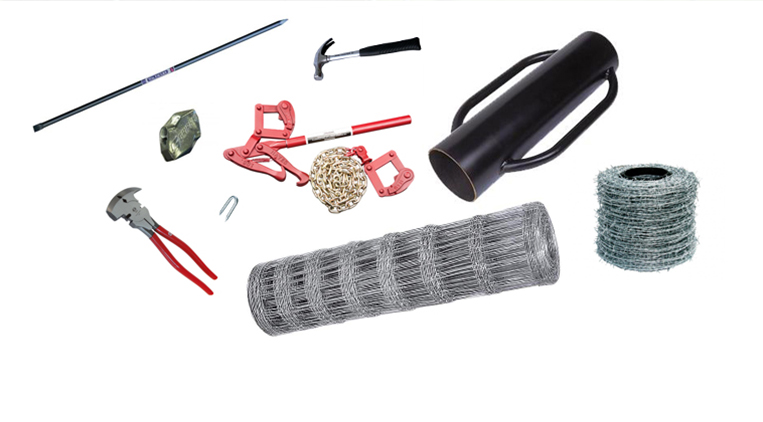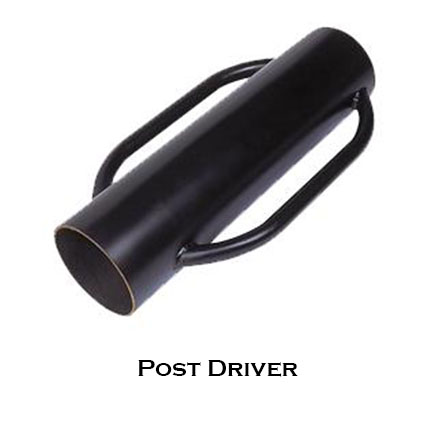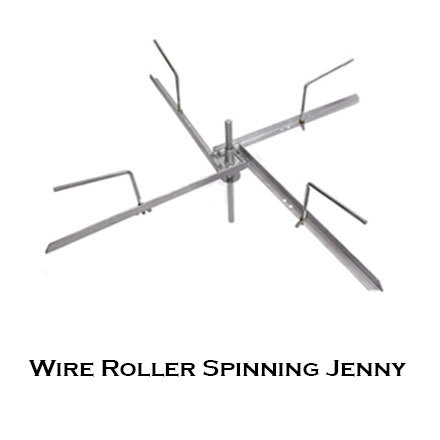
The staff at Agridirect.ie give their top 7 tips for guaranteeing a good sheep fence this spring!
Well folks, it’s that time of year again. With lambs getting stronger and more adventurous, farmers all over the country are taking to the fields with piledriver, posts and wire. On this platform, we’ve posted many articles featuring step-by-step guides to erecting a solid fence. If you’re looking for great, point-by-point and easy-to-follow instructions, why not check out one of our interviews with retired fencing contractor, Micheál Geoghegan!
Today though, we thought we’d put together a list of 7 top tips that all farmers should bear in mind when erecting a lamb-proof fence this spring. These tips were compiled as a result of conversations with farmers and fencing contractors and are sure to keep you on track!
1. Clear your fence line thoroughly. If the boundaries of the field are thick with bushes or thickets of brambles, you should cut these back, using a bell hook and a chainsaw as the need arises. This may seem like extra and unnecessary effort; but it’s not. You don’t want brambles growing on your fence, or branches falling onto it, just weeks after you put it up!
2. Make sure your sheep wire is standing the right way up. This may seem like an obvious point, but you would be surprised by how many people put sheep wire on upside-down, with the larger gaps at the bottom of the fence. This is a disaster, especially when you have adventurous lambs. The smaller squares of the wire should always be at the bottom of the fence.
3. Use large straining posts, at least 7ft high. These are the heavier posts that you will use for corners and any other bend in the fence where the wire is likely to put pressure once it is pulled tight. If you are fencing a small, square field with very straight sides, you may only need 5 or 6 of these. But if your fence is long and crooked, you will need a lot more. Remember: Smaller straining posts, such as 6fts, are likely to come loose when you pull the wire.
4. Build box strainers at corners, as this will keep the fence tight when you pull the wire. To build this kind of strainer, follow the advice of retired fencing contractor, Micheál Geoghegan: “Drive the strainer post (with your post driver). Then drive another strong post 4 feet back along the fence from the strainer. Now we’ll call that post “post A” for convenience. Post A needs to be driven deep, down to a height of 3 feet. It will take a fair bit of pounding to get it that deep. When you have it down far enough, you should secure the top of post A to the base of the strainer with tying wire. Before tightening that wire, cut another post – post B – to fit between the top of post A and the strainer. Nail on the horizontal post B at both ends to secure it. When that’s done, pull the diagonal wire tight – the wire running from post A to the straining post – with your pliers and nail off. Now if it’s a corner strainer (post), you should repeat that process going in the other direction as well. A corner strainer needs to be propped from both angles.”
5. Don't put the interim posts (the smaller posts between strainers) too far apart. 3-4 metres is usually a good distance. Any further and you run the risk of the wire becoming baggy.
6. Don't spare posts at hollows. If the fence line runs into a hollow, drive a post in the hollow and tie it back using steel wire, as with your straining posts. This will prevent it from "popping up" under the pressure of the taut wire. Drive a post on either side of the hollow, too. When you are pulling and stapling (steps 8 and 9) you should leave the pull loose enough for the wire to be forced down and stapled onto this post. Staple the posts either side of the hollow first, and then pull the wire down onto the hollow post, using your foot if necessary. Staple the bottom strand first.
7. This last is a crucial safety top. If you are using a manual post driver to drive your posts, you should be very careful. Make sure the lip of the post driver doesn’t “come off the top” of the post. If the lip of the driver catches on the top of the post as you are driving, the force you apply will jerk your head forward and bang it against the metal cylinder. This will give it an almighty crack that could concuss or even kill. This is so easy to avoid, but it is also a very common fencing accident. Caution is the key.













